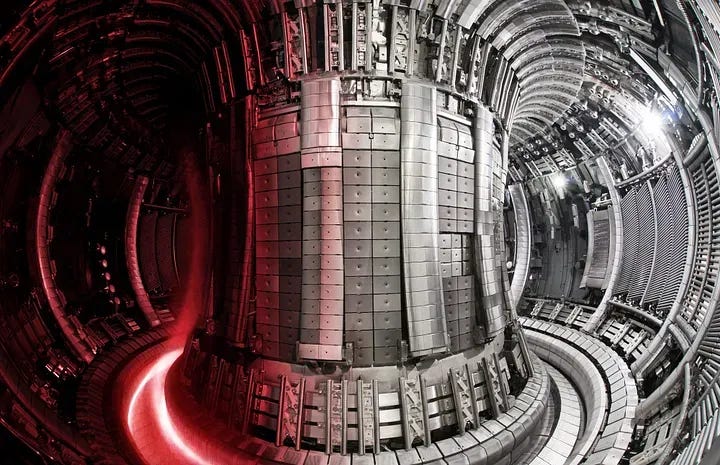A New Era in Fusion Energy: MIT's Groundbreaking Advances
Written on
Chapter 1: The Promise of Nuclear Fusion
Nuclear fusion holds the potential to transform our energy landscape fundamentally. Imagine the possibility of generating enough energy from just a few tons of hydrogen to power entire nations for a year, with helium being the sole byproduct. This revolutionary technology could address the climate crisis while providing us with an abundance of energy. However, the practical application of fusion has faced numerous challenges. To date, no fusion reactor has managed to produce more energy than it consumes, and the high costs associated with these reactors have made them economically unfeasible. Fortunately, recent advancements by MIT and Commonwealth Fusion Systems (CFS) involving high-temperature superconducting electromagnets could change this narrative.
To appreciate the significance of this breakthrough, it's essential to understand the fundamentals of nuclear fusion and how it's achieved within a tokamak.
Nuclear fusion is the same process that fuels the Sun. Within its core, extreme temperatures and pressures provide hydrogen atoms with enough kinetic energy to overcome their natural repulsion and collide to form a larger helium atom. This fusion process results in a slight loss of mass, which is converted into energy, as described by Einstein's famous equation, E=MC². This means that a mere kilogram of hydrogen can yield an astonishing 177,717 MWh of energy through fusion—far exceeding the energy produced by uranium-235 in fission or gasoline in combustion.
The remarkable energy density of fusion, alongside its only byproduct being helium, has driven scientists and engineers to replicate this process here on Earth.
Section 1.1: The Tokamak Reactor Design
At the forefront of fusion research is the tokamak, a cutting-edge reactor design. Shaped like a doughnut, the tokamak houses a reaction chamber filled with hydrogen and is encircled by powerful superconducting electromagnets. To initiate fusion, hydrogen must be heated to become plasma. The plasma, in turn, interacts strongly with magnetic fields, allowing the electromagnets to heat and compress it further, akin to how an induction stove operates. The objective is to create sufficient atomic collisions within the plasma to facilitate fusion. Currently, most operational tokamaks are experimental, allowing the energy generated during fusion to dissipate. However, the ultimate goal is to capture this energy to produce electricity, likely by using it to heat water into steam that can drive turbines.
In theory, tokamaks possess significant potential; they can run continuously and be refueled dynamically. Yet, efficiency remains an issue. The highest Q factor achieved by a tokamak, which measures energy output relative to input, was only 0.67, indicating a 33% net loss.
Subsection 1.1.1: MIT's Breakthrough

This is where the recent advancements by MIT and CFS come into play. They have successfully tested a new high-temperature superconducting electromagnet for their upcoming tokamak reactor, SPARC. Superconductivity occurs when materials exhibit zero electrical resistance at extremely low temperatures. This technology is pivotal for creating the powerful electromagnets necessary for tokamaks. Their superconducting magnet achieved an unprecedented magnetic field strength of 20 Tesla at a temperature of 20 degrees Kelvin (-423.67°F / -253.15°C). For context, ITER, the world's largest tokamak under construction, operates with electromagnets producing an 11.8 Tesla magnetic field at 4.5 degrees Kelvin (-451.57°F / -268.65°C).
So, how was this achieved? By utilizing a high-temperature superconductor called REBCO, the need for traditional insulation around the superconducting wires is eliminated. The superior conductivity of REBCO allows the wires to remain insulated without additional materials. This simplification not only streamlines manufacturing but also creates space for enhanced cooling and structural integrity. As a result, the new electromagnet is not only incredibly powerful but also requires less energy to operate and is more cost-effective to produce than current tokamak electromagnets.
Section 1.2: Implications of the Breakthrough
Why does this development matter? The SPARC reactor, currently under construction, requires a magnetic field strength of 20 Tesla to achieve a net power output. The new electromagnet not only meets this requirement but its efficiency and reduced operational energy needs could significantly increase the reactor's output potential. Notably, the cost of fusion reactors may drop drastically, with one physicist stating that the new technology could lower the cost per watt by nearly 40 times, making fusion a more economically viable energy source.
Will this breakthrough pave the way for affordable fusion power plants capable of supplying vast amounts of energy? Only time will tell. SPARC is set to commence its initial fusion reactions next year, with full operations anticipated in the early 2030s. If successful, MIT and CFS could unlock a revolutionary energy source for humanity. However, even in the best-case scenario, widespread implementation of this technology is still years away.
This video explores the fusion breakthrough at MIT, detailing how it could change energy production on a global scale.
In this video, an MIT professor explains nuclear fusion through five levels of difficulty, making the complex topic accessible to everyone.
In conclusion, the pursuit of fusion energy is a complex journey filled with challenges and breakthroughs. The support of readers like you is crucial for the continuation of this vital work. If you wish to support such endeavors or gain early access to articles, consider following me and my project, Planet Earth & Beyond, on social media platforms.
(Originally published on PlanetEarthAndBeyond.co)
Sources: MIT, Read Write, IEEE, DOE, ITER